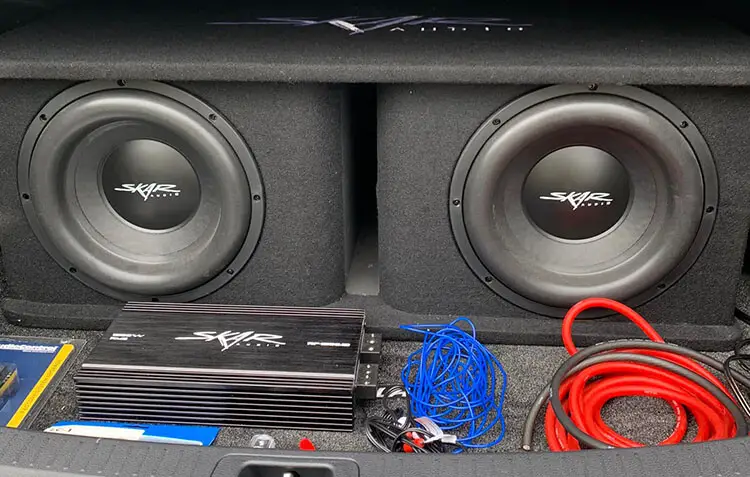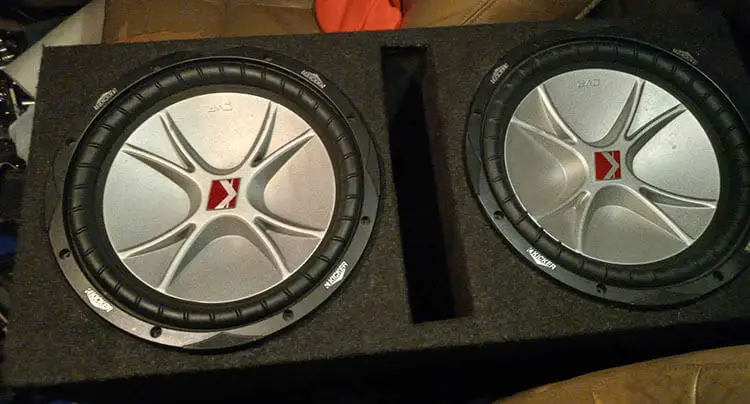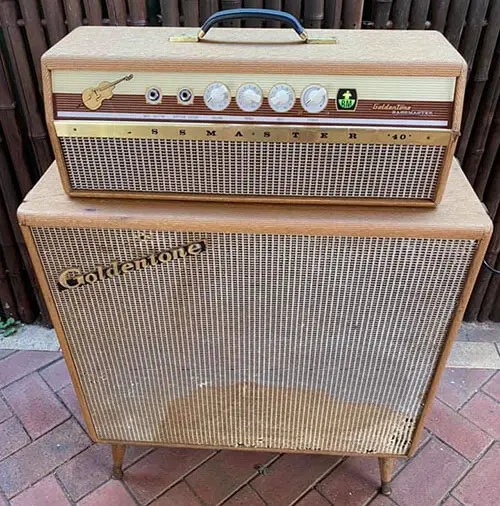The easiest way to understand the speaker is underpowered if the harsh sound is heard when playing it louder. The amplifiers will also help you to understand if the speakers are underpowered or not. You have to understand by observing some symptoms.
Apart from these two, there are many other reasons available. Some of the main reasons will be stated here along with their symptoms. Under-powering your speakers won’t cause them irreparable harm, but under-powering them by the wrong amount will hamper your time and money. So, I recommend you to go through each and every symptom properly.
Things To Check Whether The Speaker Is Underpowered Or Not

It is typical to have multiple gadgets next to one another, however certain equipment, such as Bluetooth speakers, microwave ovens, and cordless phones might interfere with one another due to their distinct frequencies. As a result, you can examine these gadgets to determine if it is the source of the issue.
Some of the major issues regarding underpowered speakers are stated below. You need to go through each and every section to ignore problems.
1. The amplifier Is Not Working Properly
Your sound system’s amplifier drives your speakers as well as allows you to choose the music source and regulate the level. A stereo amplifier, in its most basic configuration, controls the left and right channels, which together make up the sounds you hear.
Even cordless headphones with an integrated amplifier cannot power speakers or headphones without some sort of amplifier.
It’s vital to keep in mind that amplifiers are made to power passive speakers or speakers that get their power from the amplifier itself rather than from a direct power source. Active speakers wouldn’t require an amplifier to be connected.
Due to the fact that each of them ought to be equipped with an internal amp that is coupled with the driver, these speakers are also referred to as powered speakers.
Many factors, including faulty speaker installation, a defective antenna, and a loose ground connection, might contribute to noise from the speakers, such as humming and whining sounds.
These are all probable reasons for speaker noise aside from an amp that isn’t working properly. Without testing every potential cause, you might not be able to identify the precise cause. If you have done all of this examination and the noise is still present, your amplifier is broken and requires repair.
2. Driver Is Corrupted Due To Some Reasons
A driver, sometimes known as a transducer, is the mechanical component of a loudspeaker or subwoofer. The driver’s job is to take the audio signal’s electrical energy and transform it into mechanical energy by moving air to produce sound.
The cone, dust cap, spider, voice coil, magnets, frame, and various supporting elements according to the specific design are the components that make up a driver. The shape of a driver can be a cone, dome, ribbon, or horn.
The greatest speaker and subwoofer drivers are designed to produce effortless, crystal-clear audio output that is unerringly loyal to the original source material. They are built of lightweight, robust materials.
Transducers are fragile devices that can become damaged as a result of use, aging, and many environmental variables. Fortunately, many typical transducer issues are simple to recognize. The calibration of transducers can be impacted by the interference that surrounding unshielded electrical connections frequently cause. Environmental concerns, such as moisture seeping into the case, can cause damage to electrical components. Here are some typical problems to look out for:
- short circuits or faulty wiring
- faulty or inadequate power supply
- Noise or reverse polarity
- Defective connections
- multiple reasons
- defective interface board
3. The Diaphragm Is Problematic
A diaphragm is a transducer used in the study of acoustics that is designed to turn mechanical vibrations into sounds or the other way around. Usually, it is made of a thin membrane or sheet of different materials that are hanging at its borders.
The diaphragm, which is a type of membrane that is present in microphones and the human eardrum, is subjected to mechanical vibrations from the changing air pressure that sound waves cause.
On the other hand, sound waves are produced when a diaphragm is vibrated against the air by an energy source. Loudspeaker cones and earphone diaphragms are examples of this type of diaphragm and are used in air horns.
The signs of a damaged diaphragm are comparable to those of other mower issues. The first indication of a problem could be a refusal to start or a cutting out while running. The mower can make a lot of noise or excessive smoke.
4. Wave Interference Is The Main Culprit

The combined result of two or more wave trains traveling in parallel or coincident directions. The result is the result of adding the individual wave amplitudes at each place that is influenced by multiple waves.
The wave amplitudes are reinforced, resulting in constructive interference if two of the components have the same frequency and phase (i.e., they vibrate at the same rate and are maximal at the same moment).
However, if the two waves are out of phase by half a period where one wave is minimum while the other is maximum, the outcome is destructive interference, which, assuming the waves are of equal amplitude, results in complete annulment.
The interference-related humming sound issue in speakers might have several sources. The electrical ground loop is one of the frequently cited causes. You can’t ignore the audio output problems, even though frequency interference is also probably to blame for the buzzing sound problem.
A hardware problem, such as a defective speaker, might also cause the buzzing sound coming from the speakers. Additionally, the problem is likely brought on by a software problem, like corrupt drivers.
5. Excessive Heat Can Be A Big Problem
Speakers can get too hot. Loudly playing a distorted audio signal through the speakers runs the risk of overheating and damaging the speaker’s voice coils. Connecting your speakers to an amplifier that is too powerful may also cause it to overheat and eventually fail.
Speakers are not expected to emit any observable heat under normal circumstances. This, however, is not always the case. A speaker will heat up more than usual in some circumstances. It is crucial that you are aware of them in order to prevent damage to your expensive equipment.
The voice coils are a sensitive part found in speakers. The most crucial part of a speaker is this. The voice coil converts electrical signals into sound waves by taking input from the amplifier.
Depending on the electrical signal’s amplitude, it moves back and forth at various distances to accomplish this. The excursion is the term for this alternating back-and-forth motion of the voice coil.
The speaker cones push air while the voice coil oscillates, creating the sound waves you perceive.
Every speaker has a power rating that indicates how much power is needed to drive it. Finding a power amp with the same power rating as the speaker is the suggested course of action.
However, you can still utilize a power amp if you already have one if it has a considerably higher power rating than the speaker’s rating. However, you must balance the amp’s gain with the power rating of the speaker.
6. Wifi Is A Big Issue Along With Ethernet Also
Computers, tablets, cellphones, and other devices can all be connected to the internet using Wi-Fi.
Wi-Fi is a radio signal that is transmitted from a wireless router to a device nearby and converted into data you can see and use. The gadget sends a radio signal back to the router, which is wired or cabled into the internet.
Ethernet describes the formatting and transmission of data by network devices so that other hardware connected to the same LAN or campus network can recognize, receive, and process the data. Data is transmitted over physical, covered wiring known as an Ethernet cable.
A faulty Wi-Fi adapter’s failure to display available networks is one of its warning signs. Wi-Fi adapters operate by looking for wireless networks in their immediate vicinity. The Wi-Fi adapter on your computer could make the networks of numerous companies visible if it is situated in a commercial office environment.
The Wi-Fi adapter might be malfunction if you don’t see any networks, including the network at your place of business. Of course, a poor Wi-Fi adaptor may be the cause of slow speeds.
Every Wi-Fi adaptor is made to transmit and receive data. They’ll wirelessly transmit and receive data so you can work on both the local network and the internet for your company. Your computer’s ability to download and upload data might be sluggish when using a bad Wi-Fi adapter.
7. The transformer Is Not Converting the Signal Properly
A transformer is a piece of electrical equipment used to change the voltage of alternating current. It uses the magnetic induction theory and may be made to “step up” or “step down” voltages.
A transformer is a totally static solid-state device with no moving elements, ensuring a long lifespan under typical operating conditions. In its most basic form, it is made up of two or more coils of insulated wire wound around a core of laminated steel.
The iron core becomes magnetized when voltage is applied to one coil, known as the primary. The secondary or output coil, the other coil, is then caused to produce a voltage. Some of the common symptoms are:
- Transformers commonly make a buzzing and vibrating noise. It is created as a result of the iron core or laminations’ expansion and contraction. However, if this sound suddenly increases and is accompanied by powerful vibrations, your HVAC system may have a faulty transformer.
- Other factors like improper installation or a bad capacitor could be the source of the vibrations and humming sound. Therefore, it is best to wait for a technician to arrive and determine the true source of the issue.
- Your HVAC system’s transformer will often fail, which will trigger the circuit breaker. It trips in order to prevent a voltage spike. A power spike can seriously damage the furnace and air conditioner by frying numerous elements all over the devices.
Issues With A Underpowered Speaker

The ideal home entertainment system is the result of several calculations, parts, and specifications. It can be tough to understand speaker and amplifier power ratings if you’re looking to create or enhance your setup’s audio system. And a quick search reveals communities that are looking for information.
When your speaker is underpowered you will face the below problems:
- Hearing a Higher Amount of buzzing noise.
- Too much overheating.
- Sound will be interrupted along with noise.
- Will not cope with other systems properly.
- Ethernet and Wifi will not work properly.
These are the above reasons you will face when your speaker is underpowered. Apart from that, you need to check the tuning of your speaker once a while. Sometimes, networks can be a big issue in order to solve the problem.
If the Wi-Fi adapter is malfunctioning, you can see error messages appear on your monitor. Wi-Fi-related pop-up error warnings are frequently displayed by Windows. For instance, Windows may display a pop-up message informing you of the issue if the drive is corrupted or not.
Conclusion
You are already aware of some of the major symptoms regarding underpowered speakers. All the important details have been provided along with their pros and cons. The wifi, amplifiers, and transformers are the main culprits to making your speaker underpowered.
You need to understand the situation by observing the parts properly. Hopefully, you have achieved your answer. For any further issues don’t forget to reach us.
